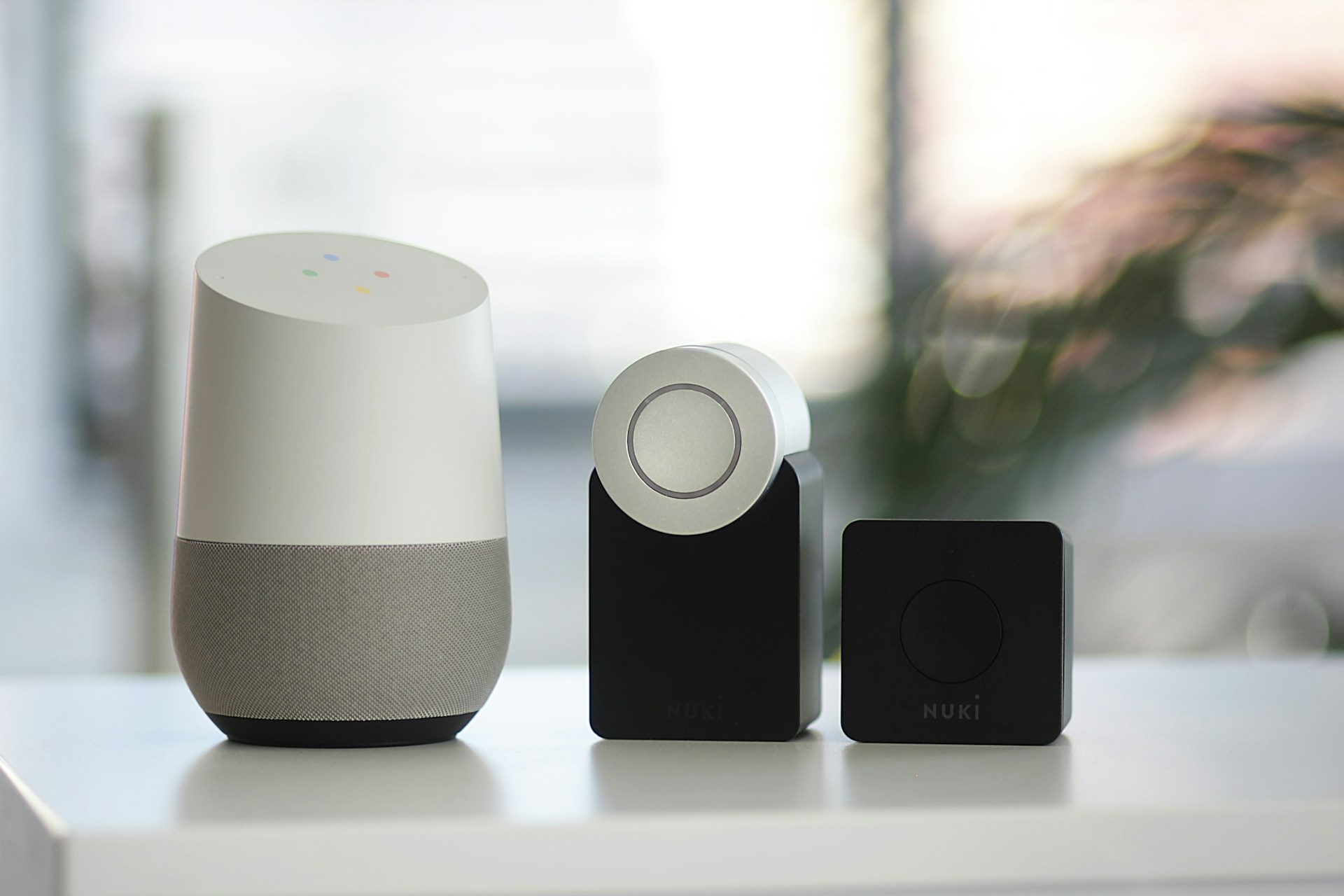
The Future of Digital Advertising: Trends and Innovations
Digital advertising has evolved tremendously over the past two decades, adapting to new technologies, platforms, and user behaviors. As we move forward, the future of digital advertising promises to be even more transformative. In this article, we explore the emerging trends and innovations that will shape the landscape of digital advertising in the coming years.
The Rise of AI and Machine Learning in Advertising
Artificial Intelligence (AI) and Machine Learning (ML) are revolutionizing digital advertising. These technologies enable advertisers to deliver more personalized and effective campaigns, optimizing everything from targeting to creative content.
Personalization and Predictive Analysis
AI and ML allow advertisers to analyze vast amounts of data, providing insights into consumer behavior and preferences. With predictive analysis, advertisers can anticipate what products or services a user is likely to be interested in and tailor ads accordingly. This leads to more relevant ad experiences and higher conversion rates.
Automation and Ad Optimization
AI-powered automation tools are streamlining the ad creation process, from dynamic ad generation to real-time bidding. These tools can adjust ad spend, creatives, and targeting in real time based on performance, ensuring optimal ROI. Automated bidding strategies in platforms like Google Ads are becoming more sophisticated, allowing for more efficient budget allocation.
Chatbots and Conversational Advertising
AI-driven chatbots are becoming an integral part of customer interaction in advertising. These chatbots engage users in personalized conversations, providing instant responses and recommendations. As conversational AI improves, we can expect chatbots to play a larger role in digital ad campaigns, offering a more interactive and engaging user experience.
The Shift Toward Privacy-Centric Advertising
As concerns about data privacy grow, the advertising industry is witnessing a significant shift towards privacy-centric approaches. Governments and tech companies alike are implementing stricter regulations and tools to protect user data.
The Demise of Third-Party Cookies
One of the most significant changes in digital advertising is:
- Phasing Out Third-Party Cookies: Google plans to eliminate third-party cookies from its Chrome browser by 2024, following similar actions by other browsers such as:
- Safari: Implemented changes to block third-party cookies.
- Firefox: Adopted cookie-blocking measures to enhance user privacy.
- Impact on Advertising: Advertisers must rethink their strategies for:
- Targeting Users: Developing new methods for targeting ads without relying on third-party cookies.
- Tracking Users: Finding alternative ways to track user behavior and measure ad effectiveness.
First-Party Data and Contextual Advertising
In the absence of third-party cookies, the focus is shifting to:
- First-Party Data: Companies are investing in collecting and utilizing data directly from their customers, which includes:
- Customer Interactions: Data gathered from direct interactions with customers.
- On-Site Behavior: Information collected from user activity on a company’s own website.
- Contextual Advertising: This approach targets ads based on the content a user is viewing, rather than their browsing history. Benefits include:
- Respecting Privacy: Ensuring user privacy by focusing on the context of the content.
- Delivering Relevant Ads: Providing users with ads that are relevant to their current interests.
Regulatory Compliance and Data Ethics
With evolving data protection laws, advertisers are focusing on:
- Regulatory Compliance: Ensuring that advertising practices adhere to:
- GDPR: Guidelines for data protection and privacy.
- CCPA: Regulations for consumer privacy and data protection.
- Data Ethics: Emphasizing ethical data usage by:
- Transparency: Clearly communicating how data is collected and used.
- Ethical Practices: Adopting responsible data practices and respecting user privacy.
These changes reflect a broader shift towards more privacy-conscious advertising, with an emphasis on transparency and ethical data practices while still striving to deliver effective and relevant advertising.
The Growth of Video and Interactive Content
Video has long been a powerful medium for advertising, but its importance continues to grow. Alongside video, interactive content is emerging as a key trend in digital advertising, offering more engaging and immersive experiences.
Short-Form Video Ads
The popularity of platforms like TikTok, Instagram Reels, and YouTube Shorts has propelled short-form video content into the spotlight. Advertisers are leveraging these platforms to create snackable, engaging video ads that capture attention quickly. The trend towards shorter, more impactful content is likely to continue, driven by the decreasing attention spans of consumers.
Interactive Video and Shoppable Content
Interactive video ads allow users to engage with the content, whether by clicking on elements within the video, answering questions, or even making purchases directly from the ad. Shoppable videos are particularly gaining traction, enabling viewers to click on products featured in the video and complete a purchase seamlessly. This innovation merges the gap between content and commerce.
Immersive Experiences with Augmented Reality (AR) and Virtual Reality (VR)
Augmented Reality (AR) and Virtual Reality (VR) are no longer just futuristic concepts—they are becoming viable tools for advertisers. Brands are using AR to create interactive ad experiences, such as virtual try-ons or 3D product demos. VR, while still in its early stages for advertising, offers the potential for fully immersive brand experiences, particularly in industries like gaming and real estate.
The Impact of 5G on Digital Advertising
The rollout of 5G technology is set to have a profound impact on digital advertising. With faster data speeds and lower latency, 5G enables new possibilities for ad formats and delivery.
Enhanced Mobile Advertising
5G will significantly enhance mobile advertising by supporting richer, more data-intensive ad formats like 4K video, AR, and VR. Advertisers can create more engaging and interactive mobile ad experiences without worrying about load times or buffering, leading to better user engagement.
Real-Time Data and Location-Based Advertising
The speed of 5G also facilitates the collection and analysis of real-time data, making location-based advertising more precise and timely. Advertisers can deliver hyper-targeted ads based on a user’s exact location and context, improving relevance and effectiveness.
Programmatic Advertising and 5G
Programmatic advertising, which relies on real-time bidding and data analysis, will benefit greatly from 5G’s capabilities. Faster processing speeds and lower latency will allow for more efficient and accurate ad placements, reducing ad waste and increasing ROI.
The Evolution of Programmatic Advertising
Programmatic advertising continues to evolve, becoming more sophisticated and integral to the digital advertising ecosystem. Innovations in this space are driving greater efficiency and effectiveness in ad buying and placement.
Artificial Intelligence in Programmatic Buying
Artificial Intelligence (AI) is revolutionizing programmatic advertising by:
- Analyzing Vast Datasets: Utilizing AI to process and interpret large amounts of data for better decision-making.
- Optimizing Bidding Strategies: Adjusting bids in real time to ensure cost-effective ad placements.
- Enhancing Targeting: Improving the accuracy of ad targeting by analyzing user behavior and preferences.
- Improving Ad Placements: Ensuring that ads are placed in the most effective contexts and environments.
- Boosting Campaign Performance: Achieving better results through data-driven insights and automation.
Header Bidding and Unified Auctions
Two key innovations in programmatic advertising are:
- Header Bidding:
- Description: A technique that allows publishers to offer ad inventory to multiple ad exchanges simultaneously before requesting bids from ad servers.
- Benefits: Increases competition for ad space, leading to higher revenue for publishers and more transparent pricing for advertisers.
- Unified Auctions:
- Description: A method that consolidates the bidding process into a single auction, integrating various demand sources.
- Benefits: Streamlines the programmatic buying process, making it more efficient and less fragmented.
The Role of Data Management Platforms (DMPs) and Customer Data Platforms (CDPs)
DMPs and CDPs are essential in programmatic advertising for:
- Collecting Data: Gathering data from various sources to build comprehensive profiles of users.
- Organizing Data: Structuring and managing data to facilitate effective use in ad campaigns.
- Analyzing Data: Utilizing insights to create more targeted and personalized ad experiences.
- Ensuring Compliance: Adhering to data privacy regulations and ethical practices in data usage.
- Enhancing Personalization: Using data to tailor ads to individual preferences and behaviors.
As programmatic advertising evolves, these advancements are driving more efficient, effective, and compliant advertising practices, shaping the future of digital marketing.
The Emergence of Influencer Marketing and Social Commerce
Influencer marketing and social commerce are rapidly becoming integral components of digital advertising strategies. These trends leverage the power of social media and personal recommendations to drive brand awareness and sales.
The Power of Micro and Nano Influencers
While celebrity influencers were once the norm, brands are now turning to micro and nano influencers who have smaller, but highly engaged, followings. These influencers are seen as more authentic and relatable, making their endorsements more credible and effective. This trend towards smaller-scale influencers is expected to continue, offering more affordable and targeted advertising options for brands.
The Integration of Social Commerce
Social commerce, where products are sold directly through social media platforms, is revolutionizing how consumers shop online. Platforms like Instagram, Facebook, and TikTok are integrating e-commerce features, allowing users to purchase products without leaving the app. This seamless integration of content and commerce creates new opportunities for advertisers to reach consumers at the point of inspiration.
Live Streaming and Real-Time Shopping Events
Live streaming, combined with real-time shopping events, is another trend gaining traction in digital advertising. Brands are using live video to showcase products, offer exclusive deals, and interact with consumers in real time. This approach blends entertainment and commerce, creating a more engaging and immersive shopping experience.
Voice Search and Audio Advertising
As voice search becomes more prevalent, driven by the rise of smart speakers and voice assistants, audio advertising is emerging as a significant trend in digital advertising.
Optimizing for Voice Search
Voice search is changing how consumers find information and interact with brands online. Advertisers are adapting by optimizing their content for voice search, ensuring that their ads and websites are easily discoverable through voice queries. This includes using natural language and focusing on long-tail keywords that align with how people speak.
The Growth of Audio Ads on Streaming Platforms
Audio advertising is gaining momentum on platforms like Spotify, Pandora, and podcasts. These ads, often delivered in a more personal and less intrusive format, can reach audiences in moments when visual attention is not required. As streaming continues to grow, audio ads are becoming a crucial component of digital advertising strategies.
Interactive Voice Ads
Interactive voice ads, which allow users to respond to ads via voice commands, are an emerging innovation. These ads engage users in a conversation, offering a more interactive and personalized experience. As voice technology advances, we can expect to see more brands experimenting with this format.
The Expanding Role of Data and Analytics
Data and analytics have always been at the heart of digital advertising, but their role is expanding as new tools and technologies emerge. Advanced analytics are enabling advertisers to gain deeper insights into campaign performance and consumer behavior.
Real-Time Analytics and Reporting
Real-time analytics tools provide:
- Instant Insights: Immediate feedback on campaign performance.
- Agile Decision-Making: The ability to quickly adjust strategies based on real-time data.
- Optimization: Enhancing results by tracking and measuring success as it happens.
Predictive Analytics and Data-Driven Decision Making
Predictive analytics tools:
- Forecast Trends: Anticipate future consumer behavior and ad performance.
- Leverage Machine Learning and AI: Utilize advanced technologies to make informed predictions.
- Enhance Decision-Making: Enable more strategic and efficient campaign planning.
The Importance of Attribution Models
Attribution models are essential for:
- Understanding Customer Journeys: Identifying which touchpoints contribute to conversions.
- Multi-Touch Attribution: Evaluating the impact of multiple interactions along the customer journey.
- Data-Driven Attribution: Using data to assign value to different touchpoints more accurately.
Here’s a table summarizing these aspects:
| Aspect | Description | Key Benefits |
| Real-Time Analytics | Provides instant insights into campaign performance. | Agile decision-making, optimization of results. |
| Predictive Analytics | Forecasts future trends and outcomes using historical data and AI. | Informed decision-making, strategic planning. |
| Attribution Models | Analyzes customer journeys to determine the impact of various touchpoints on conversions. | Accurate measurement of campaign impact. |
As data and analytics tools continue to evolve, they are increasingly crucial for optimizing digital advertising strategies and achieving better results.
Sustainability and Ethical Advertising
As consumers become more conscious of environmental and social issues, the demand for sustainability and ethical advertising is rising. Brands are being held accountable for their impact on society and the planet.
Green Marketing and Eco-Friendly Campaigns
Sustainability is becoming a key consideration in digital advertising. Brands are increasingly promoting their eco-friendly practices and products, aligning their campaigns with the values of environmentally conscious consumers. Green marketing not only helps build brand loyalty but also positions companies as leaders in sustainability.
Ethical Advertising Practices
Beyond environmental concerns, ethical advertising practices are gaining importance. This includes being transparent about data usage, avoiding misleading claims, and ensuring that ads do not perpetuate harmful stereotypes. Brands that prioritize ethical practices in their advertising are likely to earn the trust and loyalty of consumers.
Corporate Social Responsibility (CSR) in Advertising
Corporate Social Responsibility (CSR) is becoming a focal point in digital advertising strategies. Brands are using their platforms to advocate for social and environmental causes, showcasing their commitment to making a positive impact. This trend towards purpose-driven advertising resonates with consumers who prioritize brands that share their values.
The Future of Mobile Advertising
Mobile advertising continues to dominate the digital landscape, driven by the widespread use of smartphones and mobile apps. As technology advances, the future of mobile advertising promises new opportunities and challenges.
In-App Advertising and Gaming
In-app advertising, particularly within mobile games, is a rapidly growing segment of mobile advertising. Brands are leveraging the popularity of mobile games to reach engaged audiences through in-game ads, rewarded videos, and branded content. This trend is expected to continue as the mobile gaming industry expands.
Mobile Wallet Advertising
Mobile wallets like Apple Pay and Google Wallet offer new opportunities for advertisers to engage with consumers. By integrating ads with mobile wallet notifications, brands can deliver personalized offers and promotions directly to users’ devices. This form of advertising is highly targeted and can drive both online and in-store conversions.
Location-Based and Proximity Marketing
Location-based advertising is becoming more precise with advances in GPS and beacon technology. Proximity marketing, which targets users based on their physical location, allows brands to deliver relevant ads at the right time and place. This hyper-targeted approach is particularly effective for driving foot traffic to physical stores.
Blockchain Technology in Advertising
Blockchain technology, known primarily for its role in cryptocurrency, is making its way into the digital advertising space. Its potential to increase transparency and reduce fraud is drawing the attention of advertisers.
Transparency and Trust in Ad Transactions
Blockchain can enhance transparency in ad transactions by:
- Providing Decentralized Records: Maintaining an immutable record of ad placements, impressions, and clicks.
- Building Trust: Creating a transparent system that fosters trust between:
- Advertisers: Ensuring that ad spend is accurately tracked.
- Publishers: Verifying the authenticity of ad placements.
- Consumers: Offering clarity on how ads are served and measured.
- Reducing Ad Fraud: Minimizing the risk of fraudulent activities by ensuring that all transactions are recorded and verifiable.
Smart Contracts in Advertising
Smart contracts, powered by blockchain, can:
- Automate Agreements: Execute agreements automatically when predefined conditions are met.
- Enforce Contracts: Ensure that terms between advertisers and publishers are adhered to without the need for intermediaries.
- Minimize Disputes: Reduce conflicts and discrepancies by providing clear, automated terms.
- Streamline Programmatic Advertising: Play a significant role in enhancing efficiency and trust in the programmatic ad ecosystem.
Data Security and Consumer Privacy
Blockchain offers enhanced data security and privacy by:
- Encrypting Data: Protecting user information through encryption.
- Decentralizing Data Storage: Distributing data across a network to prevent unauthorized access and breaches.
- Enhancing Privacy: Providing a solution for advertisers to safeguard consumer data while complying with privacy regulations.
As blockchain technology continues to develop, its integration into advertising could lead to more secure, transparent, and efficient digital marketing practices.
The Role of Creativity in the Future of Digital Advertising
As digital advertising becomes more data-driven and automated, the role of creativity remains crucial. Innovative and compelling creative content is what ultimately captures consumer attention and drives engagement.
Data-Informed Creativity
While data and analytics provide valuable insights, the creative execution of ads is what makes them memorable. Advertisers are increasingly using data to inform their creative decisions, such as selecting the right visuals, messaging, and formats that resonate with their target audience. The combination of data and creativity is essential for successful campaigns.
Storytelling in Advertising
Storytelling is a powerful tool in advertising, allowing brands to connect with consumers on an emotional level. In the future, we can expect more brands to focus on narrative-driven campaigns that tell compelling stories, rather than just promoting products. This approach helps build brand identity and fosters deeper connections with consumers.
User-Generated Content (UGC)
User-generated content is becoming an increasingly important part of digital advertising. Brands are encouraging consumers to create and share content related to their products, which can then be used in marketing campaigns. UGC is often seen as more authentic and relatable, making it an effective way to engage audiences and build brand loyalty.





